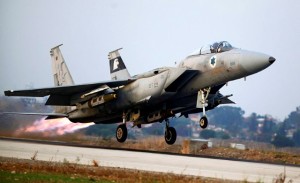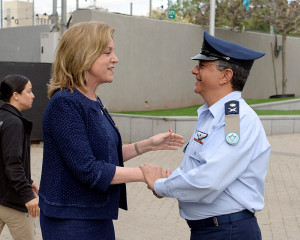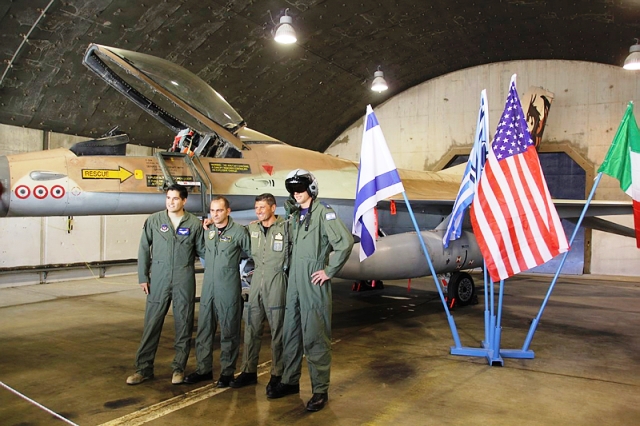The Israeli and US Air Forces tightened cooperation last week with the signing of a strategic agreement aimed at formalizing their collaboration.
By: Aryeh Savir, World Israel News


An IAF fighter jet takes off. (Edi Israel/Flash90)
In what was described as an historic agreement, Israeli and American Air Forces signed an unprecedented accord, which was revealed last Monday, formalizing the joint cooperation. Included was a work plan for the coming year.
“It is a constitutive moment and a significant milestone in the cooperation between the forces, realized for the first time in a signed agreement,” said Brigadier General Ya’akov Sharabani, the IAF’s attaché in Washington.
The two sides signed an ASNR (Air Senior National Representative) document, which gathers all fields of cooperation under one roof by building a joint annual work plan addressing these issues with the goal of promoting the relevant interests of each force.
“There is a year-long, deep cooperation between the forces as the US is our most significant and strong ally,” explained Sharabani.
“What makes the ASNR document special is how it codifies everything that the IAF and USAF has been doing together and identifies new areas where we can cooperate,” added Maj. Gen. Lawrence Martin, Assistant Deputy Under Secretary of the Air Force International Affairs. “In that sense, the ASNR is not only a very practical framework for moving forward the issues both of our air forces care about, but it also clearly serves as evidence of the deep and committed friendship between us.”
Relationship Shared by Few


Secretary of the US Air Force Deborah Lee James meets with Amir Eshel, the Commander in Chief of the IAF. (Matty Stern/US Embassy Tel Aviv)
The process that preceded the signing event lasted nearly two years and began with the visit of USAF (US Air Force) Commander General Mark Welsh to the IAF in August 2013.
In May, Secretary of the Air Force Deborah Lee James visited Israel. It was James’ visit to Israel in her current position, during which she met with senior Israel Air Force leaders, learned about IAF capabilities first-hand during visits to operational units, and looked to the future by discussing the framework for expanded security cooperative activities. “Secretary of the Air Force James’ visit exemplifies the strong US-Israel military relationship,” the US Embassy in Israel underscored in a statement.
The event earlier this month marked the completion of the process as the agreement was signed by IAF Chief of Staff Brigadier General Amikam Norkin and Maj. Gen. Martin.
“During the second visit, the commanders spoke of the importance of cooperation and the need to deepen it,” Sharabani explained. “We translated this vision into an operational document that provides an exact definition of that endeavor.”
The Israelis and Americans formed 12 teams of officers who will deal with the common interests of the forces. “We share common threats and both face the challenge of ensuring we have the best air forces in a budget-constrained environment that often requires us to make tough choices about modernization priorities,” said Martin. Some teams were tasked with dealing with the joint drills, others with absorption of the F-35 stealth jets in the IAF, and yet others with airborne medicine and flight safety.
“In the near future we will be training together as part of the ‘Red-Flag’ advanced aerial combat training exercise in America, American teams will deploy in Israel for the ‘Blue-Flag’ aerial combat training exercise and we will also become the first foreign force to take part in the comprehensive ‘Southern Strike’ aerial combat training exercise,” Sharabani said. “We have a good, fruitful cooperation between the Israeli and American Air Forces. Only few countries have agreements similar to this one.”

